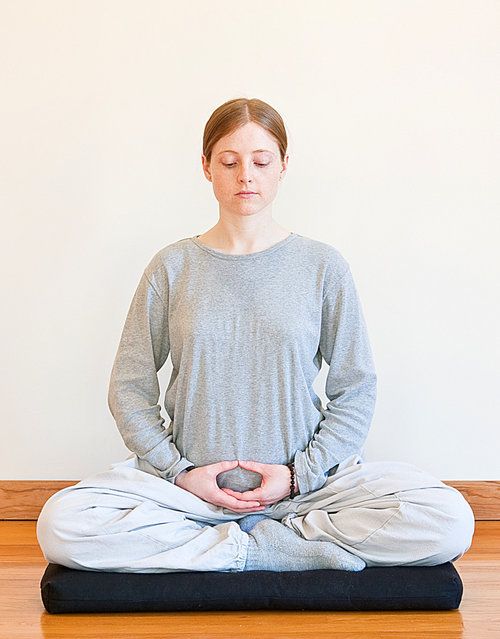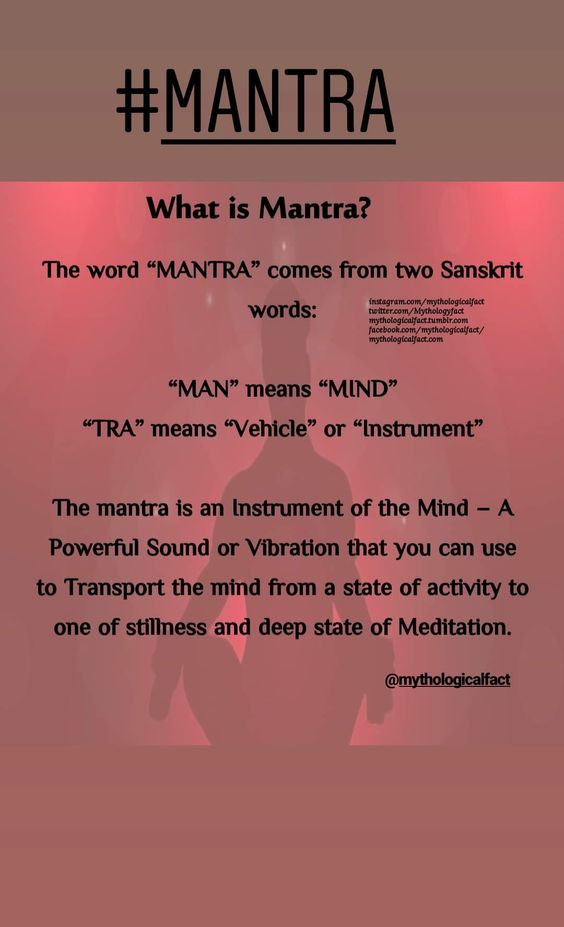Meditation for Great Focus
Navigating the complex challenges of modern life unveils a constant struggle to stay focused and productive. In the midst of buzzing smartphones and hectic workdays vying for our attention, stress, anxiety, and declining productivity become ever-present threats. Amidst this chaos, there is a simple and effective solution: meditation. Exploring research reveals a powerful revelation – integrating meditation into our daily routines acts as a potent remedy. This remedy, a blend of mindfulness and introspection, not only boosts concentration but also provides a calming effect, easing the weight of stress and sharpening mental clarity. #2 Minute Meditation
What makes meditation remarkable is not its demand for a significant time commitment, but rather its embrace of brevity. Devoting just a few minutes to the practice yields noticeable benefits in enhancing cognitive function. Therefore, meditation, with its minimalist time investment, stands out as a remedy in the midst of life’s chaos, offering relief and revitalization.
1. Box Breathing #2 Minute Meditation

Box Breathing image PinterestBox breathing, also known as square breathing or four-square breathing, is indeed a simple and effective technique for relaxation and stress management. This method is often used in meditation, mindfulness, and various stress reduction practices. It can be a valuable tool for promoting a sense of calmness and improving focus. The structured and rhythmic nature of box breathing helps regulate your breath and, consequently, your nervous system. #2 Minute Meditation
The step-by-step guide you provided is accurate, and here’s a bit more detail on each step:
Sit or lie down in a comfortable position: Find a quiet and comfortable space where you won’t be disturbed. Sit in a comfortable chair or cross-legged on the floor, or lie down if that’s more comfortable for you.#2 Minute Meditation
Close your eyes: Closing your eyes can help you direct your attention inward and minimize external distractions.
Take a deep breath in for four counts: Inhale slowly and deeply through your nose, counting to four as you fill your lungs with air. Focus on the sensation of your breath as it enters your body. #2 Minute Meditation
Hold your breath for four counts: After inhaling, hold your breath for a count of four. Be sure not to strain; the goal is to find a comfortable and sustainable breath hold.
Exhale for four counts: Slowly exhale through your mouth or nose, counting to four. Feel the release of tension as you let the breath out.
Hold your breath for four counts: After exhaling, hold your breath again for a count of four. This momentary pause allows you to experience a brief state of stillness.
Repeat this cycle for 2-3 minutes: Continue the box breathing cycle for a few minutes. As you practice, you may find it helpful to gradually increase the duration or adjust the count based on what feels comfortable for you. Box breathing is a versatile technique that can be adapted to suit your preferences and needs. It’s a valuable tool for managing stress, promoting relaxation, and enhancing focus. Regular practice can contribute to overall well-being and mental clarity. #2 Minute Meditation
2. Body Scan Meditation: #2 Minute Meditation

Meditation image by PinterestMantra meditation is another popular meditation technique that involves the repetition of a word, phrase, or sound, known as a mantra. This practice has its roots in various spiritual traditions, including Hinduism and Buddhism. Here’s a simple guide on how to practice mantra meditation:
Choose a Mantra: Select a word, phrase, or sound that holds personal significance for you or resonates with your intentions. Common mantras include “Om,” “peace,” or a positive affirmation like “I am calm.”
Find a Quiet Space: Sit comfortably in a quiet space where you won’t be disturbed. You can sit on a chair or cushion with your back straight and shoulders relaxed. #2 Minute Meditation
Close Your Eyes: Close your eyes to help eliminate external distractions and turn your focus inward.
Focus on Your Breath: Take a few deep breaths to relax and center yourself. Pay attention to the natural rhythm of your breath.
Repeat the Mantra: Begin repeating your chosen mantra either silently or audibly. Focus your attention on the sound and vibration of the mantra. If your mind starts to wander, gently bring it back to the repetition of the mantra.
Maintain a Gentle Pace: Repeat the mantra at a comfortable and rhythmic pace. The goal is not to force concentration but to allow the mantra to become a focal point for your mind. #2 Minute Meditation
Continue for a Set Time: You can practice mantra meditation for a specific duration, such as 10 to 20 minutes. Set a timer if needed.
Conclude Mindfully: When the time is up, gradually ease out of the mantra repetition. Take a few deep breaths and sit quietly for a moment before opening your eyes.
Mantra meditation can be a powerful tool for calming the mind, promoting concentration, and cultivating a sense of inner peace. Consistent practice can lead to increased mindfulness and reduced stress. As with any form of meditation, it may take time and regular practice to experience its full benefits.
3. Mantra Meditation #2 Minute Meditation

Embarking on the profound journey of mantra meditation reveals the intricate tapestry of calming the mind and ushering in the serenity of relaxation. The steps outlined for this sacred practice serve as a commendable initiation into the realm of tranquility. However, delving deeper into the labyrinth of mindfulness, one discovers additional insights and nuanced tips that can significantly enhance the potency of one’s mantra meditation. Imagine navigating the ethereal landscapes of your consciousness, with the rhythmic cadence of your chosen mantra as the beacon guiding you through the labyrinth of mental intricacies. #2 Minute Meditation
This melodic resonance, skillfully harnessed, has the potential to transform meditation into a sublime symphony of the mind. In the symphony of meditation, each note of the mantra is like a brushstroke on the canvas of your consciousness, painting vibrant hues of tranquility and resonance. The complexity arises not just from the repetition of words but from the interplay of intention, breath, and the subtle fluctuations in the rhythm of your mantra. Consider the paradox: in the pursuit of simplicity, complexity becomes the maestro orchestrating the harmonious dance of your thoughts. #2 Minute Meditation
Embrace the paradoxical nature of mantra meditation, where the seemingly straightforward repetition of words unfurls into a multidimensional tapestry of mental states, each thread woven with the finesse of introspection and contemplation. Moreover, infusing bursts of mindfulness amid the rhythmic flow of your mantra is like adding a breath of fresh air to the meditation space. Allow your thoughts to wander through the vast expanse of your consciousness, punctuating the steady stream of repetition with spontaneous bursts of awareness. #2 Minute Meditation
Selecting a Mantra: Choose a word or phrase that holds personal significance for you or evokes a sense of peace. It could be a traditional Sanskrit mantra (like “Om”) or any word that resonates with you. #2 Minute Meditation
Posture and Environment: Sit in a comfortable and upright position. Ensure that your environment is quiet and free from distractions.
Breathing Awareness: Before you start repeating the mantra, take a few deep breaths to help relax your body and center your mind.
Repetition and Focus: Repeat your chosen mantra silently or softly. You can synchronize it with your breath, saying it in your mind as you exhale.
Duration: Start with shorter sessions, such as 5-10 minutes, and gradually extend the duration as you become more comfortable with the practice.
Non-Judgmental Awareness:Approach the practice with a non-judgmental attitude. If your mind wanders, don’t criticize yourself. Acknowledge the distraction and gently redirect your attention to the mantra. #2 Minute Meditation
Consistency: Regular practice is key. Aim for daily sessions to experience the cumulative benefits of mantra meditation.
Integration with Daily Life: Consider incorporating the use of your mantra during moments of stress or when you need to refocus throughout the day.
Closing the Session: When you’re ready to finish, take a few deep breaths and open your eyes slowly. Allow yourself a moment to transition back to your surroundings. #2 Minute Meditation: You can also use a cushion or chair to support your posture. Keep your back straight and your hands resting comfortably. Focus on your breath for a few moments to establish a connection between your breath and the mantra. When your mind starts to wander (which is natural), gently bring your focus back to the mantra.
Remember that mantra meditation is a personal practice, and you can adapt it to suit your preferences. Over time, you may find that your ability to focus and your overall sense of calm improve with consistent practice.
4. Guided Meditation #2 Minute Meditation

guided meditations can be a wonderful tool for relaxation, stress reduction, and improving focus. They come in various lengths and themes, catering to different needs and preferences. Here’s a simple guide on how to do a guided meditation:
Find a Quiet Space: Choose a quiet and comfortable place where you won’t be disturbed. It could be a cozy corner in your home, a peaceful park, or any place where you can sit or lie down comfortably. #2 Minute Meditation
Get Comfortable: Sit or lie down in a comfortable position. You might want to use a cushion or chair for support. Make sure your body is relaxed, and you can maintain the position for the duration of the meditation. #2 Minute Meditation
Wear Headphones: Using headphones can enhance the experience by blocking out external noises and helping you focus on the guidance provided in the meditation. #2 Minute Meditation
Choose a Guided Meditation: There are countless guided meditations available online, on apps, and on platforms like YouTube. You can choose a meditation based on your needs, whether it’s for relaxation, stress relief, mindfulness, or specific themes like gratitude or self-love.
Set Intentions: Before starting the meditation, set a positive intention. This could be as simple as a desire to relax, let go of stress, or cultivate a sense of gratitude. Having an intention can enhance the effectiveness of the meditation.
Follow the Guidance: Once you’ve chosen your meditation, start the audio and follow the guidance of the narrator. This might involve focusing on your breath, visualizing calming scenes, or engaging in mindfulness exercises. #2 Minute Meditation
Stay Present: Try to stay present and fully engaged in the meditation. If your mind starts to wander, gently bring your focus back to the guidance.
Practice Regularly: Consistency is key when it comes to meditation. Aim to make it a regular practice, whether it’s daily or a few times a week. The benefits often become more apparent with consistent practice.
Reflect Afterward: After the meditation, take a moment to reflect on how you feel. Notice any changes in your mood, stress levels, or overall sense of well-being. Remember, guided meditation is a personal experience, and there’s no right or wrong way to do it. It’s about finding what works best for you and incorporating it into your routine as a tool for relaxation and mental well-being. #2 Minute Meditation




